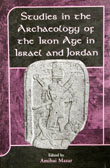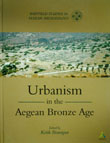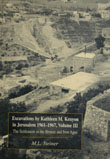Near East Archaeology Collection (3 vols.)
Digital Logos Edition
Overview
The Near East Archaeology Collection presents the findings of several sites in the Near East. The three volumes examine Aegean sites, as well as sites in Jordon and in Israel. Topics include settlement patterns, pottery, iconography, cult, paleography, urbanism, and much more. Presenting both findings and analysis, the Near East Archaeology Collection will prove a stimulating read for all those interested in the archaeological excavations of the ancient Near East.
This collection’s focus is the Bronze and Iron Ages. In the Near East, the Bronze Age (approximately 3500-1200 BC) saw widespread urbanization into organized city-states, as well as the invention of writing. The eventual rise of powerful and competing kingdoms their vassal states followed, and extensive contact with Aegean civilizations was made. During the Iron Age (beginning circa 1300 BC in the Near East), the Hittites rapidly rose to prominence in part due to their iron weapons. Iron technology was developed near the Aegean and propagated throughout Asia and Europe by the expansion of the Hittite Empire.
The two ages provide the backdrop for much of the Old Testament, and hold the secrets of the civilizations that populate the Bible. Among other things, the collection helps address issues of settlement and conquest, two different models of how Israel got into Canaan. Furthermore, the Wheeler-Kenyon Method of excavating (named for Kathleen M. Kenyon) is a well-recognized archaeological technique, and is described in Excavations by Kathleen M. Kenyon in Jerusalem 1961-1967, Volume III where it is applied to an archaeological site. Further understanding of the Method would greatly benefit any student of archaeology.
Be sure to peruse the other archaeology-related resources in the Logos catalog of electronic books, including Archaeology Odyssey: The Archive, Biblical Archaeology Review Archive, Bible and Spade Collection, and Biblical Archaeologist.
This title is included in the following collections
You can save when you purchase this product as part of a collection.
Logos 5 Portfolio Legacy Libra...
$4,749.99$4,749.99

Individual Titles

Here are thirteen essays on the Iron Age in Israel and Jordan, covering settlement patterns, iconography, cult, paleography and the archaeology of certain key sites. This volume offers an exceptionally informed update in a fast-moving area of discovery and interpretation.
The first section deals with spatial archaeology and settlement patterns, all the papers based on the fieldwork by A. Zertal in Samaria, A. Ofer in Judah, G. Lehmann in the Akko Plain, and S. Gibson in various areas in the hill country of Israel. The second section covers religion and iconography. The two single Iron Age temples known today in Israel, at Dan and Arad, are discussed by A. Biran and Z. Herzog. R. Kletter and K. Prag discuss clay figurines and other cult objects; T. Ornan identifies Ishtar on a number of seals and on a silver pendant; and N. Franklin examines the iconography and meaning of the wall relief in Room V at Sargon's palace in Khorsabad. The last section includes three studies related to specific sites. M. Steiner considers urban development in Jerusalem during Iron Age II; A. Mazar presents data from Iron Age II Beth Shean; and P. Bienkowski and L. Sedman discuss finds from Buseirah, the capital of Edom.
Amihai Mazar is Professor of Archaeology, The Hebrew University, Jerusalem, Israel.

State-formation and the emergence of civilization have been two of the major arenas of debate in Aegean prehistory for the last twenty five years. The process of urbanization has therefore been at the forefront of scholarly debate. Bronze Age towns, however, have largely been ignored, particularly at a generalized level. Research has usually focused on their architecture, and particularly their elite or public architecture, rather than their general nature and character, and many studies have been restricted to a single town or even a single building. This volume redresses the balance and draws attention and thought not only to urban settlements as a whole, but to their social and economic roles, their demographic significance and ultimately to their character and personality.
Keith Branigan is Professor of Prehistory & Archaeology at the University of Sheffield and Director of the Sheffield Centre for Aegean Archaeology.

This publication is the last volume to appear of Dame Kathleen Kenyon's excavations in Jerusalem, presenting the Bronze and Iron Age material. It contains a stratigraphical analysis of the architectural remains, a study of the pottery and an interpretation of the results. The volume includes a reconstruction of the occupational history of the site, currently a highly controversial issue, using not only Kenyon's results, but data from earlier and more recent published digs.
Margreet Steiner is an independent scholar living in Leiden, Holland and co-author of Excavations in Jerusalem Volume II.
Product Details
- Title: Near East Archaeology Collection
- Publisher: Sheffield Academic Press
- Volumes: 3
- Pages: 756
Reviews
2 ratings
MYL22
1/25/2024

